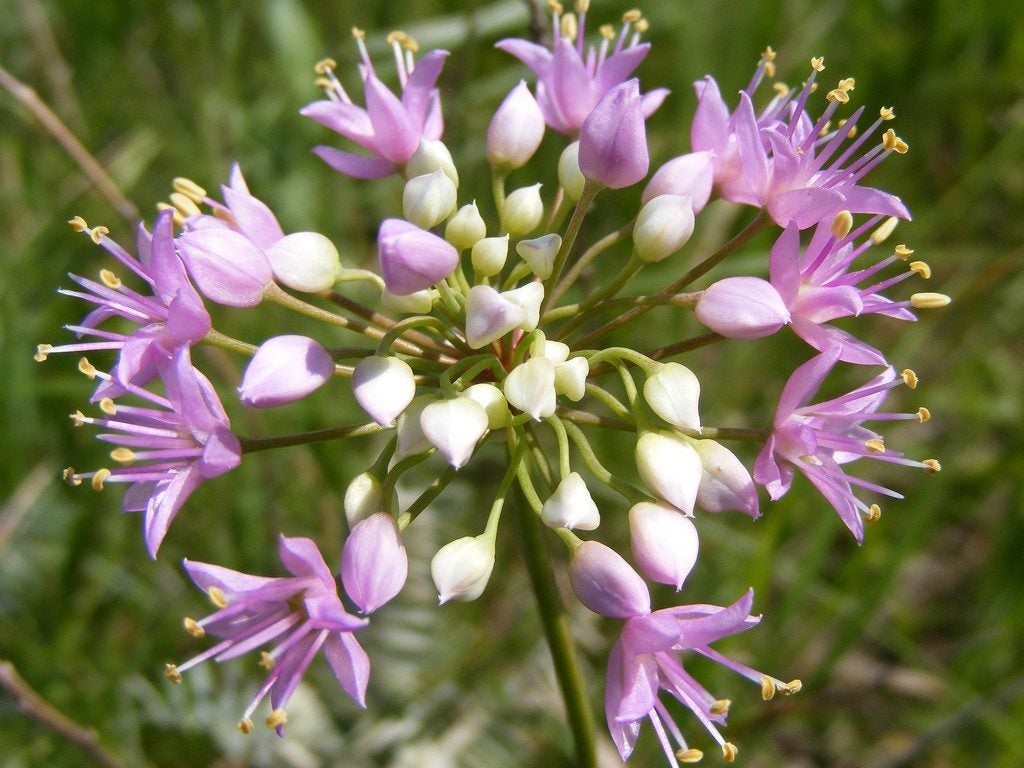What Are Prairie Onions: Information On Allium Stellatum Wildflowers


Prairie onions are a member of the Allium family, which includes onions and garlic. The bulb-forming plants are native to the central part of the United States but have been introduced in many other areas. Wild prairie onions are edible and good used raw or cooked. Prairie onions in the garden add a natural grace, with their height and structure blending perfectly with cultivated plants and other native perennials.
What are Prairie Onions?
Wild prairie onions abound on dry, inhospitable prairies and rocky slopes. What are prairie onions? Known as Allium stellatum wildflowers, prairie onions are 1 to 2 foot (30.5-61 cm.) tall perennial herbs that form edible bulbs. They produce a starry head of clustered florets culminating in a globe-like inflorescence. Related to the Lily family, these plants are also called prairie onions due to their tenacious habit of growing on rocky hillsides. The foliage is insignificant and forms in early spring before the stalk begins to grow. Once the stalk rises, the leaves die back leaving a clean, vertical green stem topped with the spectacular pink, white, or lavender flower.
Prairie Onions in the Garden
Wild prairie onions produce copious tiny, black seeds once the flowers are done. These self-sow readily but the resulting seedlings take several years to form bulbs and bloom. Mature plants of Allium stellatum wildflowers form bulblets over time. These are offset bulbs that are generally vegetative. The easiest way to add prairie onions to the landscape is through bulbs or the division of existing plants. Bulbs need protection from the hot sun and prefer partial shade and moist soil. Prairie onion care is minimal. The plants tend to naturalize when planted in preferred locations and the flowers will rise annually in mid to late spring.
Planting Wild Prairie Onions
Prepare the soil in an appropriate site by digging at least 6 inches (15 cm.) into the soil and tilling while adding generous amounts of leaf litter or compost. This will loosen the soil and increase the porosity so the bulbs don't get soggy and rot. Add a handful of bone meal and work into the soil as well. Plant the bulbs with the root side down, pointed side up. They need to be at least 4 inches (10 cm.) deep in the soil but not more than 8 inches (20.5 cm.). Cover with the amended soil and pat down gently. The best time for planting is early spring, but, in mild areas, you can plant in fall.
Caring for Your Native Onions
The most important detail of prairie onion care is division. Since the seeds take such a long time to produce a flowering plant, the best way to ensure blooms is from divisions of the bulbs. Each division will become a new plant. Additionally, good drainage and once-a-year fertilizer or bone meal in spring will get your wild prairie onion off to a good start for the blooming season. Sample some of the new stems as a substitute for chives or pull out the bulblets for roasted onions. Wild prairie onions are an excellent replacement for any regular onion. Enjoy their sweet pungency and ease of care.
Sign up for the Gardening Know How newsletter today and receive a free copy of our e-book "How to Grow Delicious Tomatoes".

Bonnie Grant is a professional landscaper with a Certification in Urban Gardening. She has been gardening and writing for 15 years. A former professional chef, she has a passion for edible landscaping.